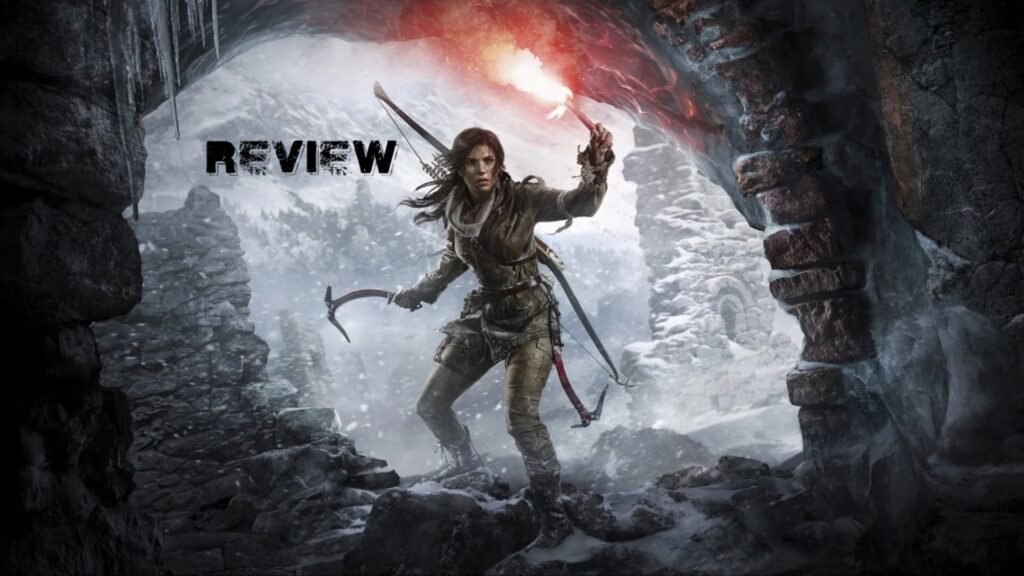
Rise of the Tomb Raider is the most fun I’ve had with a Lara Croft game since the original in 1996. The story is full of danger and intrigue, the tombs are deviously designed, and I was as awestruck by the expansive, romantic environments as I was as a child playing the first game. While I could have done with a few more puzzles and a few fewer firefights, I thoroughly enjoyed every thrilling moment of it.
Rise of the Tomb Raider embraces a broad, Indiana Jones-style adventure, racing forward at a breakneck pace with over-the-top sequences. Yet, it’s also grounded by a strong emotional throughline. Minute by minute, Lara Croft shines. She’s confident, intelligent, and reacts to danger with the calm intuition of a seasoned action hero.
However, this time around, a new obsessiveness adds complexity to her character. Unlike in Tomb Raider (2013), where I cringed at her constant injuries, I found myself noticing the cracks in her moral compass. The supporting cast, while not as well-developed, thankfully occupies less screen time than Lara’s compelling antagonists.
I won’t delve too much into the details to avoid spoilers, but the clash between Lara and her morally corrupt foes results in some genuinely dark moments. Lara’s journey through the world is more complex as well. All her tools, including the excellent new wire spool, can be used in quick succession, allowing her to stay airborne for longer periods. Some of the most heart-pounding moments in Rise of the Tomb Raider came from frantic, acrobatic chases, where I scrambled to press the right buttons hundreds of feet above the ground.
Lara’s rope arrows see a lot of use here, and the puzzles involving them are impressively varied. While puzzles are more integrated into the main storyline than in Lara’s last adventure, the most interesting ones are still the optional side challenges. Rise of the Tomb Raider‘s challenge tombs are the standout feature—ingenious, visually stunning, and increasingly difficult.
In fact, my only major criticism of the game is that there isn’t enough puzzle-solving. As I progressed through the main story, I found myself rushing through combat sections just to get to the next puzzle. Not that combat is a chore—it’s just that the third-person shooting is the weakest aspect of the game. That said, it’s far from terrible. Lara can now craft destructive items on the fly, turning a standard shootout into a chaotic, gory spectacle in seconds. It’s fun, brutal, and slightly ridiculous, adding variety to enemy encounters. However, this also makes the game’s stealth mechanics feel somewhat redundant.
While you can earn XP bonuses for stealth takedowns, Lara becomes such a powerful fighter that there’s little incentive to avoid combat entirely. That said, experimenting with Lara’s arsenal remains satisfying. Weapons are upgradable using parts scattered throughout the world, which keeps combat feeling fresh and engaging.
By the end of Rise of the Tomb Raider (on standard difficulty), Lara has become a near-invincible force—something to consider when choosing your difficulty level.
Beyond the main story, there’s plenty to discover. The game’s semi-open world, crafted with great attention to detail, offers ample incentive to explore. It’s not purely about exploration, though. There are mission givers and area-specific challenges that reward you with valuable items. For completionists, there are numerous relics, documents, murals, and hidden caves to find, which can stretch an average playthrough from 12–15 hours to 30–40 hours.
Rise of the Tomb Raider also features an Expedition mode, replacing the previous game’s multiplayer with a fun system where you can compete against yourself and friends in custom challenges using modification cards. Although it’s enjoyable, I wouldn’t recommend spending real-world money on these cards.
In summary, Rise of the Tomb Raider raises the bar set by its predecessor, offering a rollicking adventure story, memorable villains, stunning vistas, and clever puzzles. While the combat doesn’t particularly stand out, Lara’s enhanced versatility in battle makes fighting far more enjoyable.